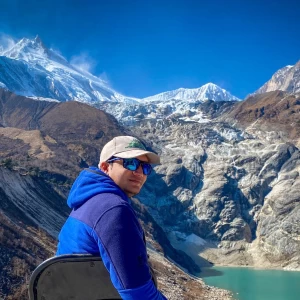The best hike in Nepal depends entirely on the individual’s experience, fitness level, season, and budget. Hiking options in Nepal range from world-famous routes like Everest Base Camp to lesser-known adventures like the Kanchenjunga Base Camp. For those seeking shorter hikes, trails like the Annapurna Foothills offer great options.
This article explores the best hiking in Nepal based on different factors. We also highlight the unique features of each route and explain why they might be the perfect choice for you.
Also, check Tours and Trekking in Nepal
Understanding Nepal’s Hiking Landscape
Nepal is one of the world’s top destinations for mountain hiking. The country is home to eight of the world’s 14 tallest peaks, including Mount Everest. Whether you're a beginner or an experienced hiker, Nepal offers a wide range of routes suited to different fitness levels and travel styles.
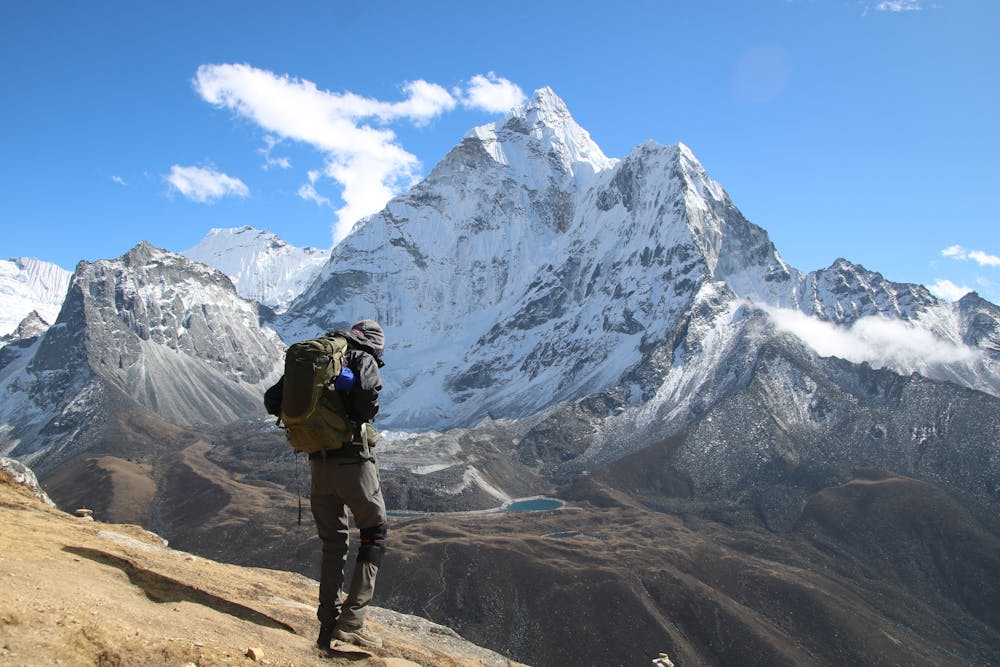
Choosing the Right Hiking Region
Each region offers a unique experience for those searching for the best hike in Nepal. The Everest region is known for high-altitude routes and iconic Himalayan views. Annapurna combines lush valleys, alpine landscapes, and cultural villages. Langtang is quieter and closer to Kathmandu, perfect for shorter yet rewarding walks. For remote and off-the-beaten-path experiences, Dolpo and Kanchenjunga are ideal choices.
Hiking Styles: Teahouse, Camping, and Culture-Focused
Most routes use teahouses—simple lodges that provide food and shelter. These make it easy to hike light and independently or with a guide. In remote areas like Dolpo or Upper Kanchenjunga, camping is the only option. Some regions, such as Upper Mustang, offer cultural hikes through Tibetan-style villages, monasteries, and ancient trade routes.
Difficulty Levels – From Easy Walks to High Pass Crossings
- Beginner-level hikes (3–6 days): Poon Hill, Ghandruk, and parts of Langtang stay under 3,300 meters. They’re short and accessible with comfortable stays.
- Moderate hikes (7–14 days): Annapurna Base Camp, Langtang Valley, or Mardi Himal go higher and require more endurance but stay non-technical.
- Advanced hikes (15+ days): Routes like the Three Passes or Manaslu Circuit involve crossing 5,000+ meter passes and demand strong fitness and experience with altitude.
Choose based on how much time you have, how well you handle altitude, and whether you prefer comfort or challenge.
Best Hike in Nepal- Select Destinations
Nepal has over 100 hiking routes, each offering a unique experience. Choosing the right one depends on your time, fitness level, and interest in landscapes or culture. Some of these trails are considered among the best hike in Nepal for their scenery, cultural depth, or remoteness. Most hikes require entry permits, such as national park fees or special area permits, and some routes involve domestic flights to reach the trailhead.
Here are a few of the most well-known hikes. These can be booked directly with us for a smooth, fully organized experience.
Annapurna Circuit – Best Hike in Nepal for Long-Distance and Landscape Diversity
- Highest Altitude: 5,416 meters (17,769 feet) at Thorong La Pass
- Distance: 160–210 km, depending on the chosen route
- Duration: 7 to 21 days
- Best Time: October–November or April–May
- Highlights: Thorong La Pass, Natural Hot Spring, Muktinath Temple, Ice Lake, Manang Village
.jpg)
The Annapurna Circuit is one of the most iconic long-distance hikes in Nepal. It circles the Annapurna massif, offering a dramatic shift in landscapes—from lowland forests and farmland to alpine valleys and high mountain passes.
This route is considered moderate to challenging. The original 21-day journey has been shortened in recent years, thanks to road access extending deeper into the mountains. Most hikers now begin from Jagat, Dharapani, or Chame depending on where the road is open.
The trail leads through the scenic Manang Valley, climbs over the Thorong La Pass, and descends to Muktinath, a sacred site for both Hindus and Buddhists. From there, hikers often continue toward Jomsom or Tatopani, known for its natural hot springs.
Along the way, you'll get stunning views of Annapurna I to IV, Dhaulagiri (8,167 m), Machhapuchhre, and several 6,000-meter peaks. The variety in culture, scenery, and elevation makes this one of the most rewarding hikes in the world.
Everest Three Passes – Best Hike in Nepal for Experienced High-Altitude Hikers
- Highest Altitude: 5,545 meters (18,192 feet) at Kala Patthar
- Distance: Around 166 km
- Duration: 18 to 21 days
- Best Time: March–May and September–November
- Highlights: Kongma La (5,535 m), Cho La (5,420 m), Renjo La (5,360 m), Gokyo Lakes, panoramic Everest views
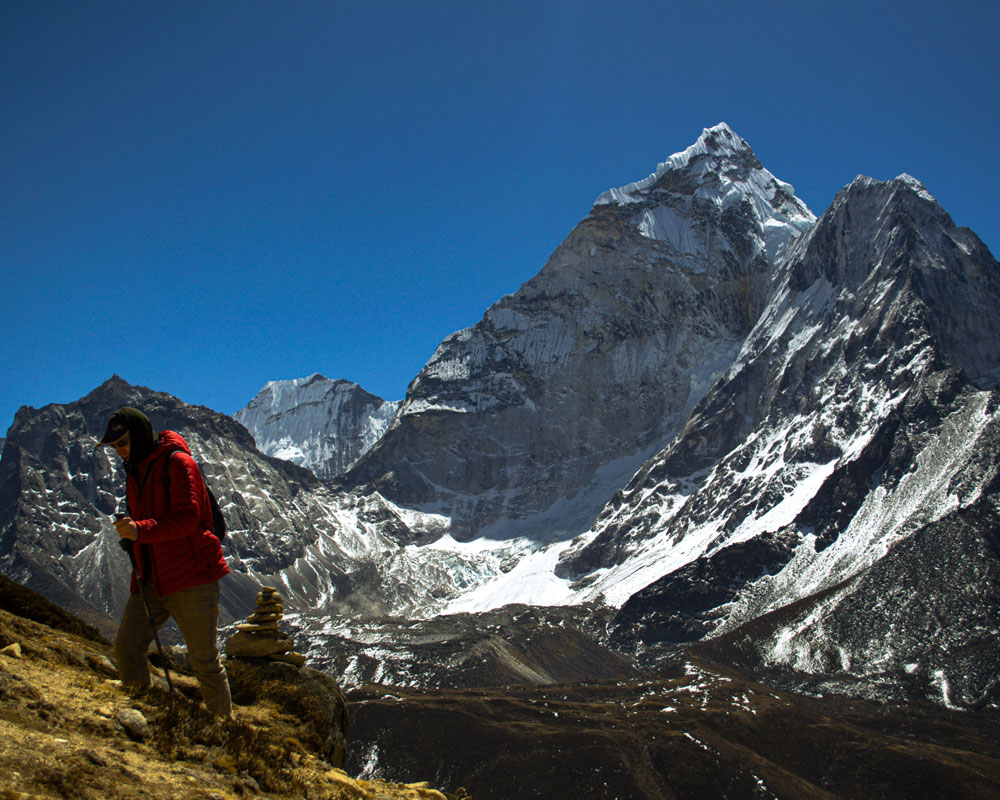
This route is one of the most demanding journeys in the Everest region. It crosses three major mountain passes—Kongma La, Cho La, and Renjo La, each rising above 5,000 meters. The trail forms a loop, linking the classic Everest route with the Gokyo Valley.
Acclimatisation stops are usually made in Namche Bazaar (3,440 m), Dingboche (4,410 m), and Gokyo. The terrain is steep and remote, ideal for those with strong experience at altitude.
The route also includes side trips to Kala Patthar and optionally to Everest Base Camp, depending on your pace. Along the way, you’ll get sweeping views of Mount Everest, Lhotse, Makalu, Cho Oyu, and other towering peaks. The Gokyo Lakes and glacier crossings add contrast to the rugged landscape.
Permits required include the Sagarmatha National Park Entry and TIMS card. The journey begins with a flight into Lukla, known for its short, sloped airstrip. Good footwear and weather-ready gear are a must. Due to the challenges, guided support is strongly recommended.
Join the cheapest Everest Base Camp Trek with us.
Manaslu Circuit - Best Hike in Nepal for Remote and Rugged Trails
- Highest Altitude: 5,106 meters (16,752 feet) at Larkya La Pass
- Distance: Around 177 km
- Total Days Covered: 10 to 18 days
- Best Time: March to May and September to November
- Best Attractions: Mount Manaslu (8,163 m), Larkya La Pass, Nubri Valley, Tibetan-style villages, Buddhist monasteries
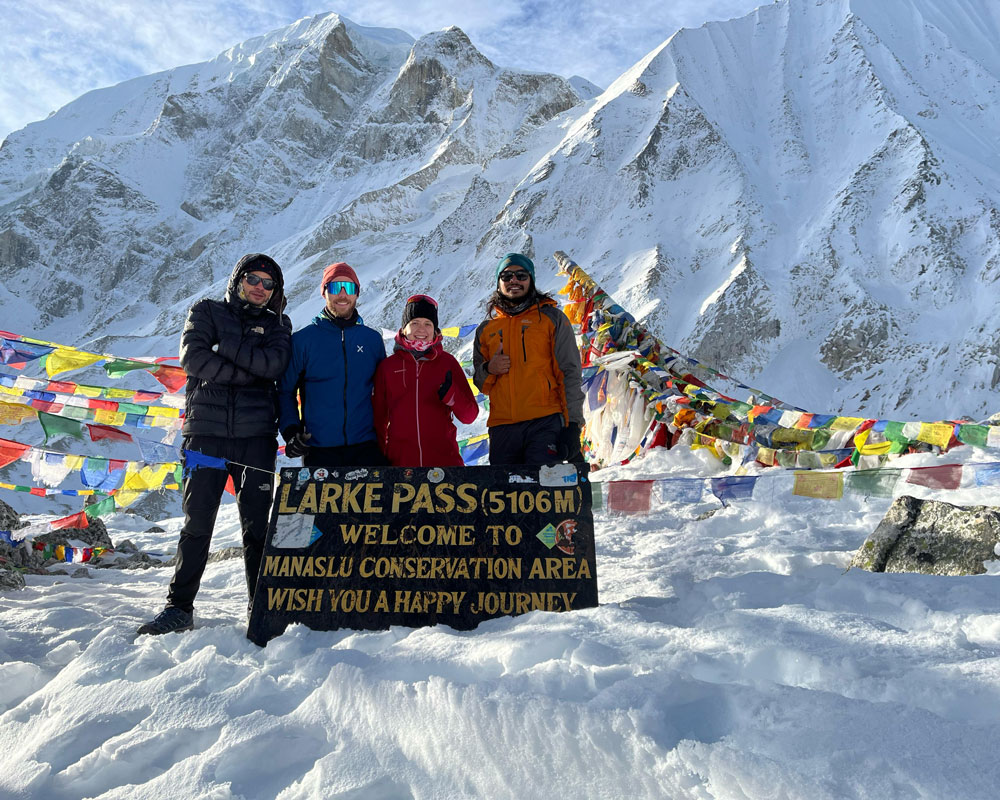
The Manaslu Circuit is the best route for those looking for an off-the-beaten-path mountain journey. It circles the eighth-highest peak in the world—Mount Manaslu—and passes through remote villages, narrow gorges, and high alpine terrain.
The trail starts from Macchakhola or Jagat, depending on current road conditions. It gradually climbs past terraced hillsides, suspension bridges, and landslide zones into the high-altitude Nubri Valley.
The high point of the journey is the Larkya La Pass, one of the longest passes in the Himalayas, surrounded by sharp peaks and glaciers.
To enter this region, hikers need a Manaslu Restricted Area Permit, along with MCAP and ACAP.
Tip: For those wanting a deeper cultural experience, Tsum Valley is a highly recommended extension. This secluded valley lies northeast of the main Manaslu route. It offers unique insights into Tibetan Buddhist culture, ancient Milarepa caves, remote Chhokang Paro and Mu Gompa, and untouched alpine scenery. This upgrade adds 5 to 7 days to the total journey and requires a Tsum Valley Restricted Area Permit.
Kanchenjunga Base Camp Trek - Best Hike in Nepal for True Wilderness
- Highest Altitude: 5,143 meters (16,873 feet) at Pangpema (North Base Camp)
- Distance: Around 270 km
- Total Days Covered: 20 to 25 days
- Best Time: March to May and September to November
- Best Attractions: Mount Kanchenjunga (8,586 m), Sele La Pass, Mirgin La Pass, Yalung Glacier, Oktang viewpoint
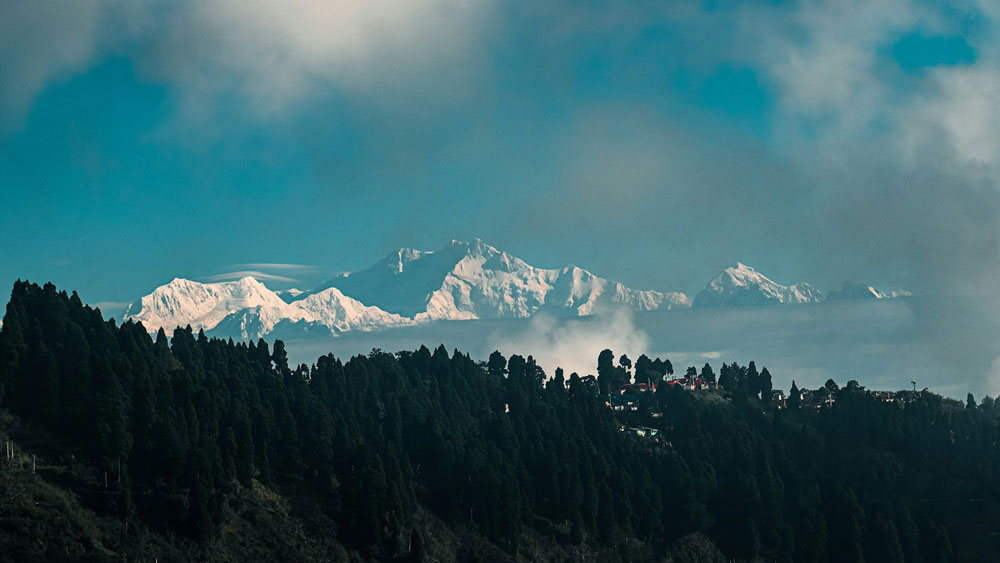
This is one of the most remote journeys in Nepal. It takes you to both the North and South Base Camps of Kanchenjunga, the world’s third-highest mountain. The route is long, quiet, and challenging, but rewards you with wild terrain and mountain views few others get to see.
The trail begins after reaching Taplejung. From there, it climbs through lush valleys, terraced hills, and dense forests toward the alpine zone.
The North Base Camp (Pangpema) offers close views of the towering north face of Kanchenjunga. The South Base Camp shows the massive Yalung Glacier and the impressive Oktang viewpoint. Connecting both routes requires crossing Sele La and Mirgin La passes.
You’ll pass through the Kanchenjunga Conservation Area, where you may spot red pandas, Himalayan blue sheep, and exotic birds. You’ll also meet Rai, Limbu, and Tibetan Buddhist communities along the trail.
Permits required include a Special Restricted Area Permit (SRAP) and the Kanchenjunga Conservation Area Permit (KCAP). Independent trekking is not allowed here; a licensed guide is mandatory.
Tip: If you’re short on time or unsure about covering both base camps, you can choose just one. The North Base Camp is more scenic. The South Base Camp is easier. Either way, proper acclimatization is critical.
Langtang Valley with Gosaikunda - Best Hike in Nepal for 1-week Timeframe
- Highest Altitude: Kyanjin Ri (4,773 meters | 15,658 feet)
- Distance: 50 to 70 km, depending on the route
- Total Days Covered: 7 to 12 days (including Gosaikunda)
- Best Time: March to May and September to November
- Best Attractions: Kyanjin Gompa, Langtang National Park, Gosaikunda Lake

Langtang Valley is one of the closest trekking regions to Kathmandu. It offers a mix of natural beauty and Tamang Buddhist culture. The trek passes through rhododendron forests, yak pastures, and traditional villages.
The journey starts from Syabrubesi and climbs steadily toward Kyanjin Gompa, a Buddhist monastery village at 3,870 meters. From there, a side trip to Kyanjin Ri gives stunning views of Langtang Lirung and other snow-covered peaks.
Langtang National Park is part of this route. It's known for Himalayan wildlife like red pandas and Himalayan tahr. You'll need a Langtang National Park Entry Permit and a TIMS Card for this journey.
Many travellers extend their trip to Gosaikunda, a sacred alpine lake located at 4,380 meters. It adds around 3 to 4 days to your trek. The lake is an important pilgrimage site, especially for followers of Lord Shiva. It’s most visited during Janai Purnima, a Hindu festival in August.
The trail to Gosaikunda follows narrow ridges and forested slopes. Though the terrain isn’t too technical, the elevation gain is significant, so proper acclimatisation is necessary.
Tip: If you're short on time, you can do just the Langtang Valley section in 7 to 9 days. If you want both mountains and myth, add Gosaikunda to complete a more fulfilling cultural journey.
Pikey Peak- Best Hike in Nepal for less crowded Everest Views
- Highest Altitude: 4,065 meters (13,333 feet), Pikey Peak
- Distance: Approximately 80 km
- Total Days Covered: Around 7 days
- Best Time: March to May and September to November
- Best Attractions: 180-degree views of the Everest region, Thupten Choling Monastery, Junbesi Village
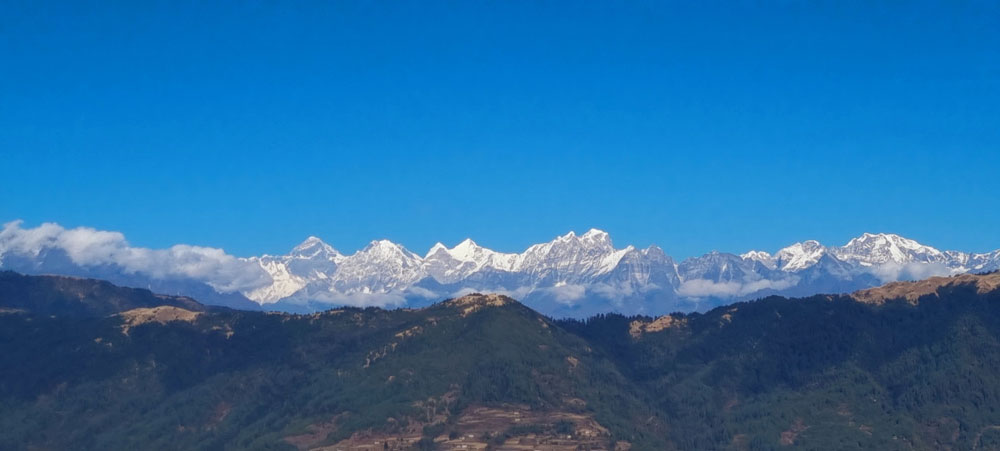
Pikey Peak offers spectacular panoramic views of Everest, Kanchenjunga, Makalu, and Lhotse. It is less crowded than popular Everest treks, making it a peaceful alternative.
The trail passes through rhododendron and pine forests, terraced fields, and Sherpa and Tamang villages. You will experience the rich culture of these Himalayan communities.
The trek’s difficulty is moderate, suitable for those with some trekking experience. You will need a Gaurishankar Conservation Area Permit (GCAP) and a TIMS Card for this route.
Annapurna Foothill- Best Hike in Nepal for Culture and Comfort
- Highest Altitude: Around 2,000 meters (6,562 feet)
- Distance: Varies, typically 50-70 km
- Total Days Covered: 4-7 days
- Best Time: March to May and September to November
- Best Attractions: Traditional Gurung villages like Ghandruk, Landruk, Majhgaon, and Dhampus, rich cultural experiences, luxury lodges, best Annapurna views
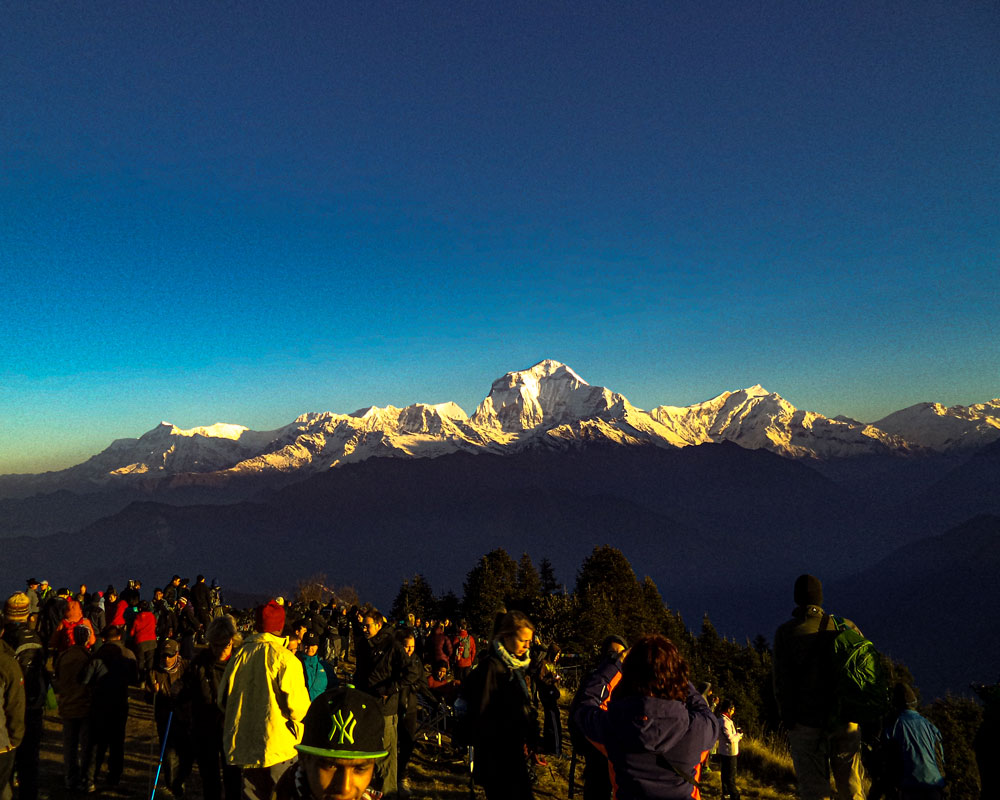
The Annapurna Foothill trek explores less crowded parts of the Annapurna region. This route passes through charming Gurung villages such as Ghandruk, Landruk, Majhgaon, and Dhampus.
These villages showcase the rich culture and traditions of the Gurung people. Visitors get to experience local life, traditional music, dances, and warm hospitality.
This trek offers a great mix of cultural immersion and comfort. Many luxury lodges and boutique teahouses are available along the trail. These provide a high standard of accommodation and excellent food.
The terrain is moderate, making it suitable for travellers looking for a cultural experience without the physical demands of higher altitudes.
Permits needed include the Annapurna Conservation Area Permit (ACAP) and a TIMS Card.
Sundarijal-Chisapani-Nagarkot - Best Hike in Nepal inside Kathmandu
- Highest Altitude: 2,135 meters (7,005 feet) at Chisapani
- Distance: 45 kilometres
- Total Days Covered: 3 days
- Best Time: Year-round
- Best Attractions: Sundarijal Waterfall, Chisapani Forest, Nagarkot Views
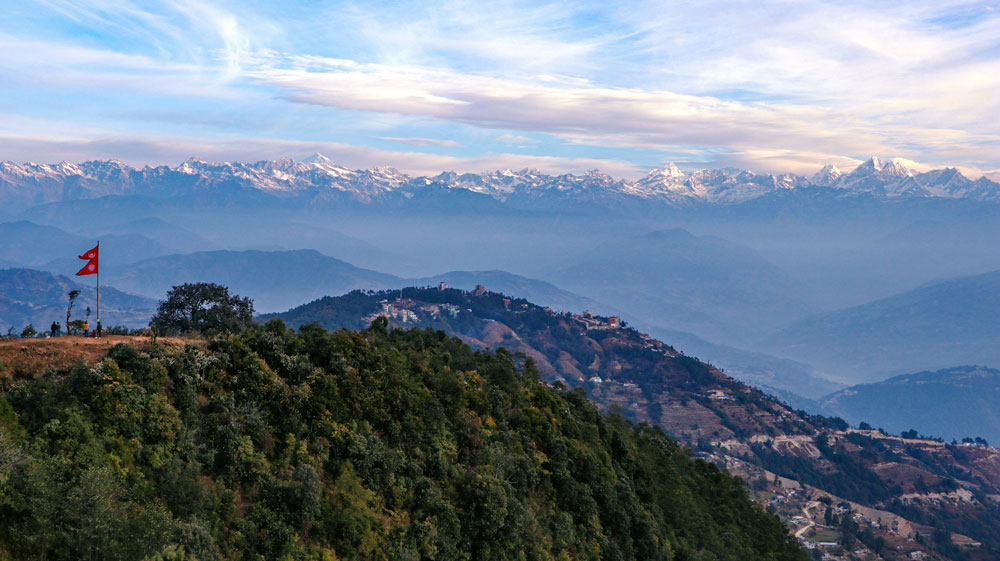
The Sundarijal-Chisapani-Nagarkot hike offers an easy and accessible nature escape right inside Kathmandu’s vicinity. The trail passes through lush rhododendron forests and offers beautiful views of the sunrise and sunset from Chisapani.
Nagarkot provides stunning mountain panoramas, making the trek rewarding despite its short length. The terrain varies from mild to rough in some parts, so caution is advised while walking in the hills.
This trek is ideal as a warm-up for travellers preparing for higher altitude journeys or those looking for a refreshing nature break close to the city.
Only the Shivapuri National Park Permit is required for this trek.
When to Go: Best Seasons for Hiking in Nepal
The most important idea to select the best hike in Nepal is choosing the right time to walk here.
Autumn (September to November)
Autumn is the most popular time to hike. The skies are clear, temperatures are mild, and mountain views are stunning. Popular routes fill up quickly during this season.
- Pros: Clear skies, pleasant weather, spectacular views.
- Cons: Crowded trails, higher prices for accommodation and permits.
Spring (March to May)
Spring offers pleasant weather and blooming rhododendrons along the trails. It’s also a great time for hiking less crowded, off-the-beaten-path villages.
- Pros: Clear weather, colourful flowers, good visibility.
- Cons: Some popular routes can still be busy.
Winter (December to February)
Winter is best for lower-altitude hiking. Higher routes may have snow and harsh conditions, so those hikes are less safe and less common.
- Pros: Quiet trails, crisp air, clear mountain views.
- Cons: Cold temperatures, snow at high altitudes, limited route options.
Summer / Monsoon (June to August)
Monsoon brings lush greenery but also heavy rainfall, slippery paths, and potential landslides. Some regions like Mustang and Dolpo remain accessible and offer a unique experience.
- Pros: Lush forests, fewer crowds.
- Cons: Wet conditions, challenging trails, risk of landslides.

Things to know about Restricted Area Hiking in Nepal, along with Permits
The restricted area of Nepal was implemented in 1980. The main purpose of this concept is to protect the environment and culture, to preserve the national jewellery, and to support tourism. Thus, the restricted area treks in Nepal offer your visit to the ancient places
The restricted area has been implemented for trekking in Nepal in Manaslu, Nar Phu, Tsum Valley, Dolpa, Humla, Lower Mustang, and Upper Mustang Valley. Any international traveller needs to pay for a special permit for any kind of activity here. However, most treks do not need restricted permits.
The price of trekking permits varies. Here is the detailed pricing:
| Permit | Nationality | Price |
| Trekking Information Management System (TIMS) Card | SAARC Nationals | NPR 600 per person |
| Other Nationals | NPR 2,000 per person |
| Annapurna Conservation Area Permit (ACAP) | SAARC Nationals | NPR 1,000 per person |
| Other Nationals | NPR 3,000 per person |
| Langtang National Park Permit | SAARC Nationals | NPR 1,500 per person |
| Other Nationals | NPR 3,000 per person |
| Sagarmatha National Park Permit (for Everest Region) | SAARC Nationals | NPR 1,500 per person |
| Other Nationals | NPR 3,000 per person |
Restricted Area Permits
| Region | Season | Price |
| Upper Mustang | All Season | USD 500 for the first 10 days, and USD 50 for each additional day |
| Manaslu Region | September to November | USD 100 for the first 7 days, and USD 15 for each additional day |
| December to August | USD 75 for the first 7 days, and USD 10 for each additional day |
Tsum Valley | September to November | USD 40 per week |
| December to August | USD 30 per week |
| Lower Dolpo | All Season | USD 10 per week |
| Upper Dolpo | All Season | USD 500 for the first 10 days, and USD 50 for each additional day |
| Humla | All Season | USD 50 per week |
Additional Idea for a successful hike in Nepal
Here are a few tips to choose and make sure your hike in Nepal is beautiful, as mentioned:
Match Your Fitness and Experience Level
Some hikes are gentle and family-friendly, while others require endurance, experience with altitude, and good physical fitness.
- For easy walks with cultural highlights, consider routes around Kathmandu or the Annapurna Foothills.
- Moderate routes often include diverse landscapes, small mountain passes, and villages.
- Challenging hikes include high passes, long distances, and rugged terrain in remote areas like Kanchenjunga or Everest Three Passes.
- If you are looking to tick off your bucket list, then head for the Everest Base Camp Walk.
Cultural Experiences Matter
If culture is important, choose routes passing through traditional villages like Ghandruk and Landruk in the Annapurna region or the Sherpa villages in the Everest region. These offer insight into Gurung, Sherpa, and Tibetan cultures.

Permit Requirements and Accessibility
Different hiking areas require different permits. Restricted regions like Manaslu and Kanchenjunga need special permits, as mentioned before. Consider how easy it is to reach your starting point — some places require flights plus jeep rides, while others are accessible by road.
Conclusion
Choosing the best hike in Nepal means finding the right balance between your fitness, interests, and the season. Whether you prefer easy cultural routes or challenging high passes, trekking in Nepal offers unforgettable experiences for every adventurer. Planning carefully ensures a safe and rewarding journey through these stunning landscapes.


.jpg)









